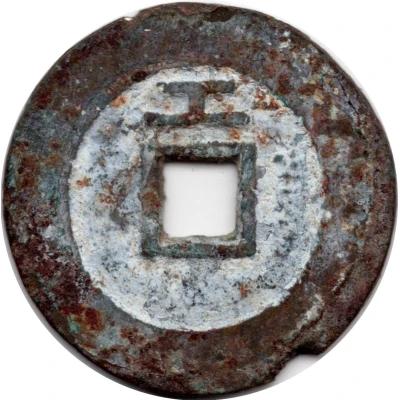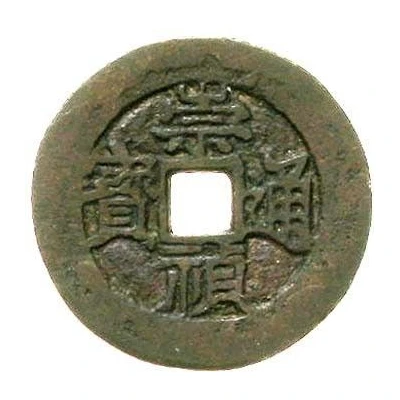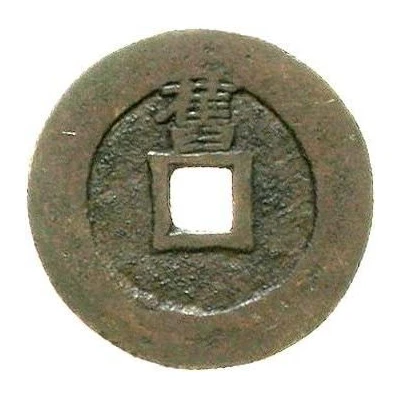


© Blake S
1 Cash - Chongzhen Tongbao; northern type; Gong ND
| Brass | - | 24 mm |
| Issuer | Empire of China |
|---|---|
| Emperor | Ming dynasty › Chongzhen (崇祯帝) (1627-1644) |
| Type | Standard circulation coin |
| Years | 1630-1644 |
| Value | 1 Cash |
| Currency | Cash (621-1912) |
| Composition | Brass |
| Diameter | 24 mm |
| Shape | Round with a square hole |
| Technique | Cast |
| Orientation | Medal alignment ↑↑ |
| Demonetized | Yes |
| Updated | 2024-10-04 |
| Numista | N#222617 |
|---|---|
| Rarity index | 92% |
Reverse
One Chinese ideogram below (H20.269) or above (H20.295) square hole.
Script: Chinese (traditional, regular script)
Lettering: 工
Translation:
Gong
Ministry of Works (mint)
Edge
Plain
Comment
Hartill suggests the larger, heavier coins (around 26 millimetres and weighing 1.3 Qian) were the first 1 Cash pieces produced. By 1630, coins minted in the north weighted 1.0 Qian and coins minted in the south weighed 8 Fen or less.The Northern types and the Southern types are differenciated by the left part of Zhen.
- Northern types: 礻
- Southern types: 示
Interesting fact
One interesting fact about the Standard circulation coin 1 Cash - Chongzhen (Tongbao; northern type; Gong) ND (1630-1644) from Empire of China made of Brass is that it was used as a form of currency during the Chongzhen era of the Ming dynasty, which was a time of great economic and cultural growth in China. The coin was made of brass, a durable and widely available metal, and featured a unique design that included a square hole in the center, which was used to string the coins together for ease of use. Despite its durability, the coin was not widely accepted outside of China, and its value varied depending on the region and the time period. Today, this coin is considered a rare and valuable collector's item, and is highly sought after by numismatists and historians interested in Chinese currency and history.

